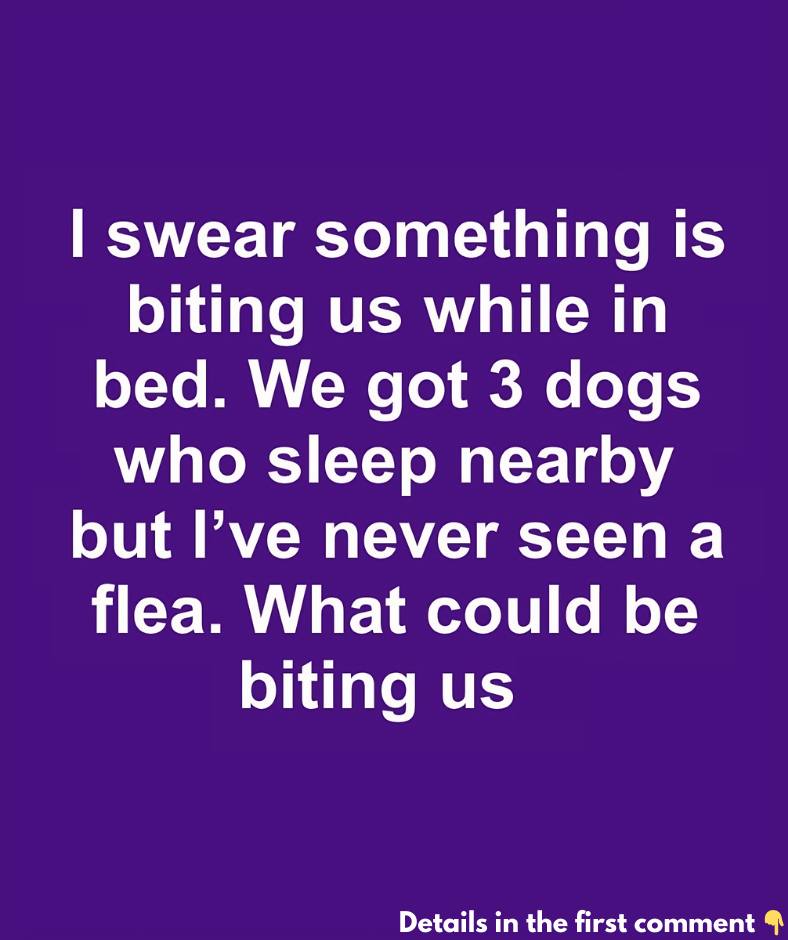There’s nothing worse than waking up with itchy, red bumps and not knowing what’s causing them. If you have pets, fleas might be your first suspicion. But what if you’ve found no sign of them? Many things can leave bites on you overnight, not just fleas. Here, we’ll explore possible culprits and steps to solve this unsettling mystery.

Recognizing Bed Bug Bites
First, take a closer look at the bites themselves. Bed bug bites usually appear in clusters or lines, often on exposed skin areas like arms, neck, and face. These bites are red, slightly swollen, and intensely itchy. This pattern can help differentiate bed bug bites from flea bites, which are more commonly found on the lower legs and ankles.
Common Household Pests That Bite
Nighttime bites can come from various pests, including fleas, bed bugs, mites, and even mosquitoes. Each pest has distinct habits and hiding spots in the home, so knowing what to look for can help narrow down the source.
- Fleas: They often hide in carpets, bedding, and furniture, with larvae and pupae stages that are hard to spot. Even if you don’t see adult fleas, they may still be lurking.
- Bed Bugs: These pests are sneaky, hiding in mattress seams, bed frames, and behind wallpaper. They emerge at night to feed, which makes them hard to detect.
- Mosquitoes: Less common indoors, but they can enter through open windows or doors, leaving itchy bites in random spots.
- Mites: Though many mites don’t bite humans, scabies mites can burrow into the skin, causing intense itching.
By learning the characteristics of each pest’s bites, you can narrow down possible suspects.
Fleas Without Pets?
Even if you haven’t seen fleas on your pets, they might still be in the home. Fleas can live in carpets, pet bedding, and furniture, especially in their larval and pupal stages, which are difficult to detect. Check pet bedding for tiny, dark “flea dirt” or debris left by fleas. Regular vacuuming and pet grooming can help uncover flea activity.
Bed Bugs: Hidden Yet Persistent
Bed bugs are notoriously elusive, hiding during the day in places like mattresses, box springs, and bed frames. At night, they emerge to feed, leaving clusters of itchy bites. If you suspect bed bugs, look for small blood spots on sheets or dark droppings along mattress seams. A flashlight can help in your inspection.
Dust Mites and Skin Irritation
Dust mites don’t bite, but they can still cause irritation in sensitive individuals. These tiny creatures feed on dead skin cells and thrive in household dust, especially in bedding. If you’re sensitive to dust mites, they might trigger eczema or allergy-like symptoms, leading to red, itchy skin that can be mistaken for insect bites.
Fleas and Ticks from Pets
If you have pets, fleas and ticks can easily transfer to your bedding, especially if pets sleep nearby. Ticks are less likely to stay indoors but can latch onto pets outside and fall off indoors, potentially biting humans. Regular flea and tick treatments for pets can help reduce the risk of these pests in your home.
Less Common Culprits: Mites, Lice, and More
Apart from fleas and bed bugs, other insects might be behind the bites:
- Scabies Mites: These mites burrow into the skin, causing intense itching and small red bumps, often on hands and wrists. Scabies requires medical treatment to eliminate.
- Body Lice: Unlike head lice, body lice live in clothing and bedding and only come into contact with the skin to feed. They often cause red, itchy bumps where clothing seams rub against the skin.
Could It Be an Allergy?
Sometimes, what seems like bites could actually be a reaction to something in your environment. New laundry detergents, certain fabrics, or skincare products could cause similar symptoms. If you’ve recently changed products, try switching back to see if the irritation subsides.
Steps to Identify Nighttime Biting Sources
If you’re still unsure, here’s a systematic approach to find the source of your bites:
- Inspect Your Bedding and Mattress: Use a flashlight to look for bed bugs, especially in mattress seams and corners.
- Check Your Pets: Look closely for any flea dirt or ticks, especially if they’ve recently been outdoors.
- Track the Bites: Take note of when and where bites appear, as patterns can help identify the pest.
- Set Traps: Place glue traps or bed bug monitors around your bed to catch any small creatures that might be biting you.
Pest Control Strategies
Once you’ve identified the culprit, taking action is essential. Here are some steps to help tackle the problem:
- For Fleas: Wash pet bedding regularly and use flea control products as recommended by your vet. Vacuum carpets and furniture frequently.
- For Bed Bugs: Wash all bedding in hot water and dry on high heat. Consider professional pest control for severe infestations.
- For Dust Mites: Use hypoallergenic mattress covers, wash bedding in hot water, and vacuum frequently to reduce dust mites.
- For Lice or Mites: In cases of body lice or scabies, wash all clothing and bedding in hot water and consult a doctor for appropriate treatment.
When to Call in the Pros
If home remedies aren’t enough, it might be time to call professional pest control. Professionals have access to effective treatments and can inspect hidden areas for severe cases of bed bug or flea infestations.
Preventing Future Infestations
To keep pests at bay, try these preventative measures:
- Seal Cracks: Seal cracks and crevices around your bedroom, as they’re ideal hiding spots for pests.
- Maintain Cleanliness: Clean bedding, floors, and furniture regularly to discourage infestations.
- Limit Pet Access: Keeping pets off your bed can help reduce the spread of fleas and ticks.
- Use Protective Covers: Mattress and pillow covers can prevent bed bugs and dust mites from settling in.
Conclusion
Waking up with unexplained bites can be frustrating and worrisome. By identifying potential sources and using a systematic approach, you can get to the root of the issue. With patience, observation, and some proactive pest control steps, you can enjoy a peaceful, itch-free night. Use these tips to keep your bedroom a comfortable, pest-free haven—for you and your pets!





